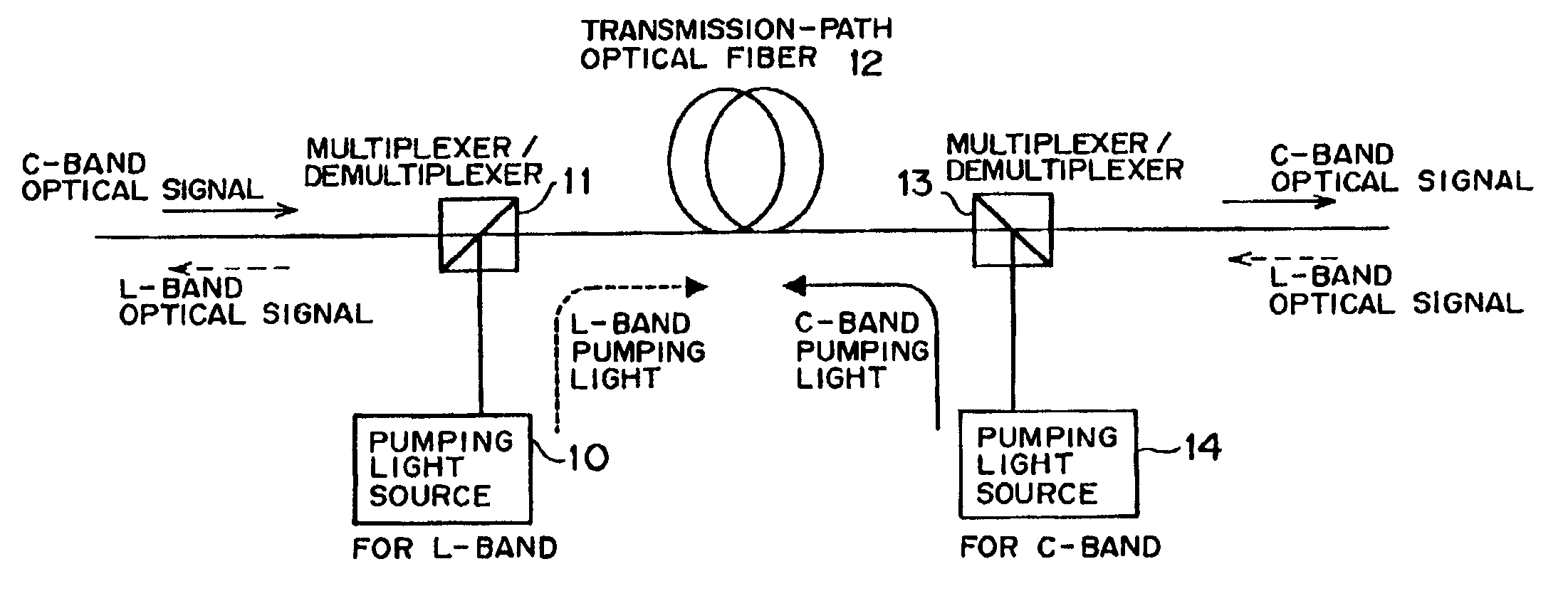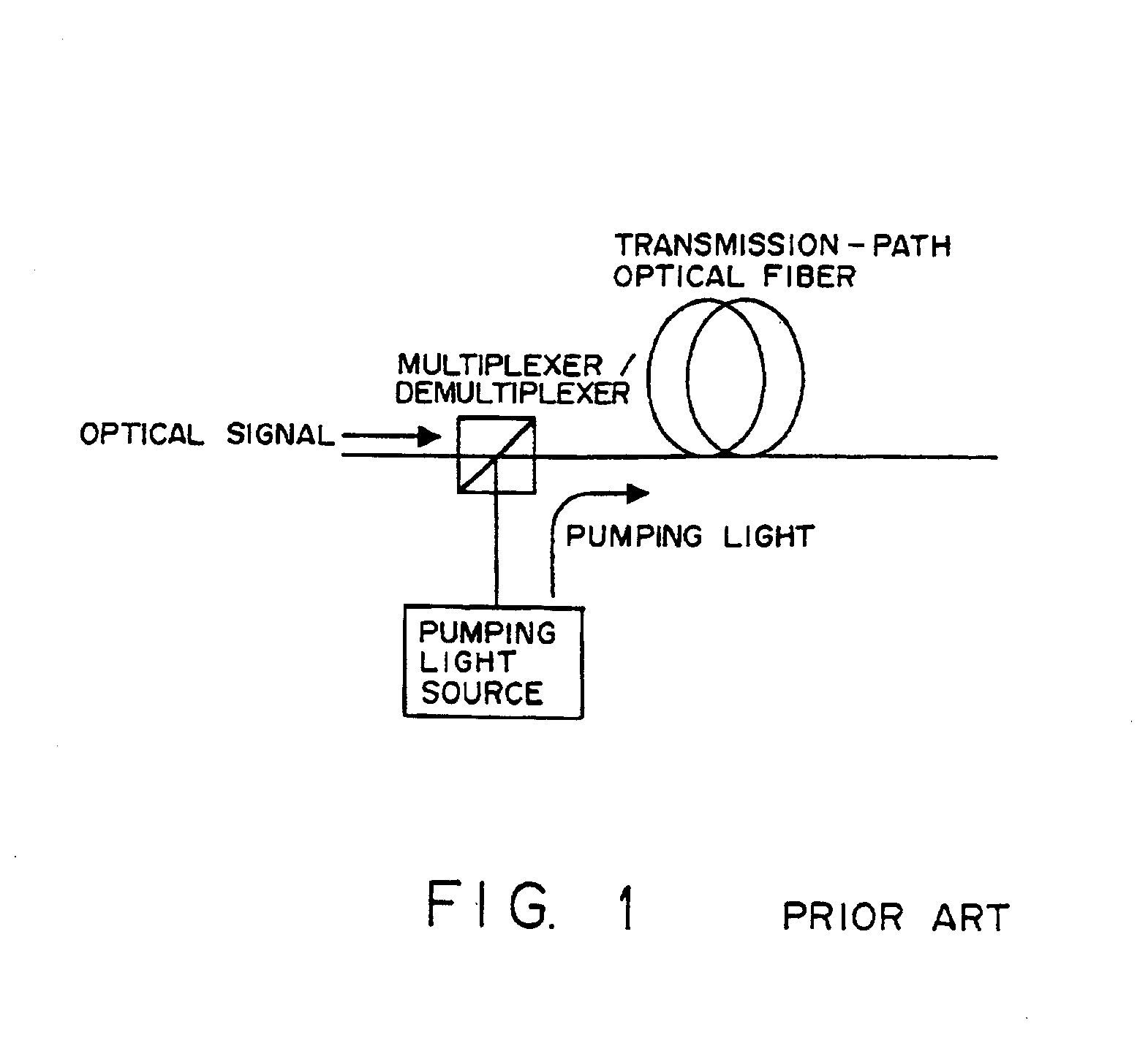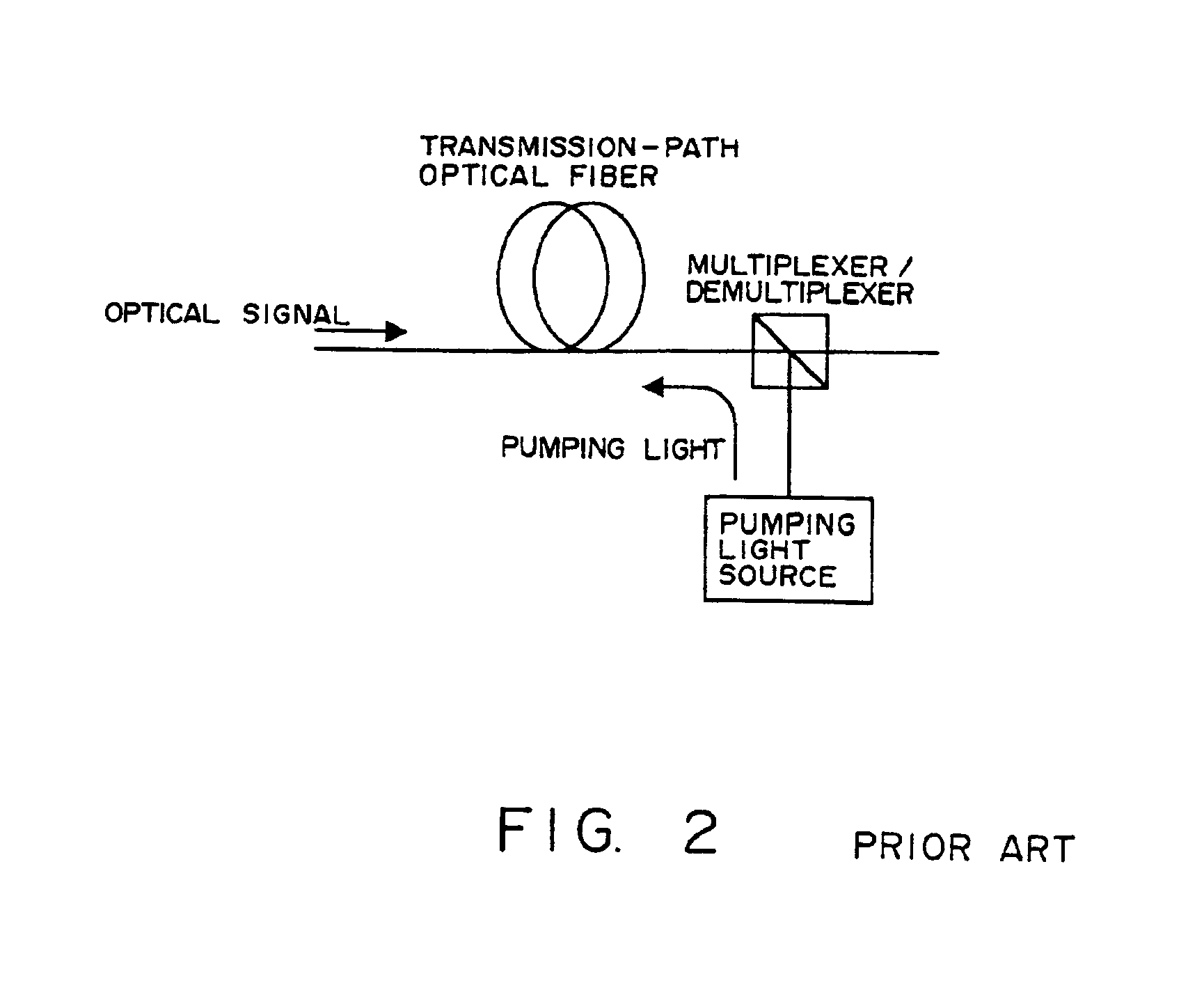Bidirectionally transmittable optical wavelength division multiplexed transmission system
- Summary
- Abstract
- Description
- Claims
- Application Information
AI Technical Summary
Benefits of technology
Problems solved by technology
Method used
Image
Examples
first embodiment
[0028]FIG. 3 is a diagram illustrating the invention.
[0029]Wavelength bands used are a C-band and an L-band, to which upstream and downstream paths are allotted, respectively. It is supposed that the C-band has a band of wavelengths ranging from 1529.55 nm to 1563.86 nm, and that the L band has a band of wavelengths ranging from 1567.95 nm to 1604.03 nm. Further, the wavelength of pumping light for distributed amplification of the C-band is in the 1435-1445 nm range, and the same wavelength for distributed amplification of the L-band is in the 1475-1485 nm range.
[0030]Although L-band pumping light is combined with the C-band optical signal in a transmission-path optical fiber codirectionally with the C-band signal (in the upstream direction), the C-band signal is not affected by the L-band pumping light, because the C-band signal contains wavelengths for pumping which are different from the wavelength of the L-band pumping light, and hence amplified only through backward pumping imp...
third embodiment
[0041]FIG. 5 is a diagram showing the invention.
[0042]It is assumed in FIG. 5 that a C-band optical signal is transmitted in the direction of the solid arrow and that an L-band optical signal is transmitted in the direction of the dotted arrow. Let the C-band be taken as an example. A C-band optical signal from a C-band transmitter is separated from an L-band optical signal by a WDM coupler 20 (or a wavelength-selective multiplexer / demultiplexer), and then amplified by a C-band EDFA and combined by the WDM coupler 20 again with the L-band optical signal. The combined optical signals enter the transmission-path optical fiber 12, where the same signals are amplified by Raman amplifying action. Pumping light used for the amplification of the C-band optical signal is supplied from a pumping laser 23. A WDM coupler 21 thereafter separates the C-band optical signal from the L-band optical signal, and the separated C-band optical signal is then amplified by a C-band EDFA and further combin...
PUM
 Login to View More
Login to View More Abstract
Description
Claims
Application Information
 Login to View More
Login to View More - R&D
- Intellectual Property
- Life Sciences
- Materials
- Tech Scout
- Unparalleled Data Quality
- Higher Quality Content
- 60% Fewer Hallucinations
Browse by: Latest US Patents, China's latest patents, Technical Efficacy Thesaurus, Application Domain, Technology Topic, Popular Technical Reports.
© 2025 PatSnap. All rights reserved.Legal|Privacy policy|Modern Slavery Act Transparency Statement|Sitemap|About US| Contact US: help@patsnap.com



